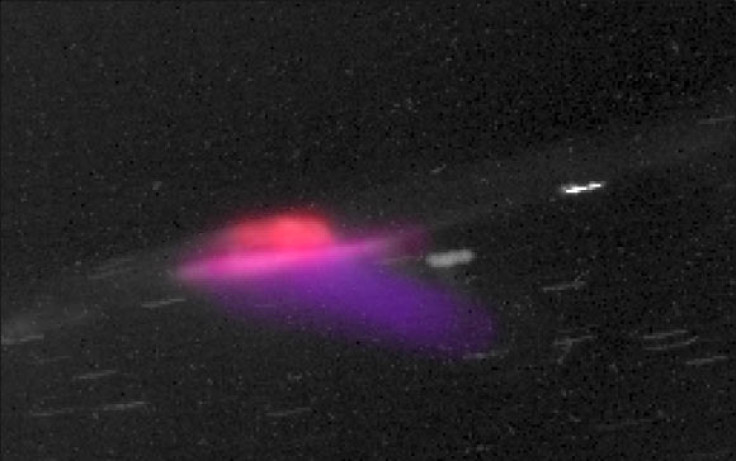Nasa's Hubble Captures Dancing Auroral Lights on Saturn's North and South Poles

Detailed images of auroras at Saturn's north and south poles have been captured by Nasa's Hubble Space Telescope and Cassini spacecraft.
Saturn's auroras glow when electrons enter the planet's atmosphere and collide with hydrogen molecules. Occasionally, a sudden gust of fast-moving solar wind, composed mainly of electrons and protons, create an active aurora on the planet.
A team of astronomers used the Hubble telescope to observe the northern auroras in ultraviolet wavelengths, while capturing images of the north and south poles using ultraviolet, visible-light and infrared wavelengths.
Dr Marcia Burton, from Nasa's Jet Propulsion Laboratory in California, told Sci-news.com: "The auroras at Saturn are some of the planet's mosty glamorous features - and there was no escaping Nasa's paparazzi-like attention."
Yet Dr Jonathan Nichols, the team leader, added that seeing the phenomenon is rare: "Saturn's auroras can be fickle - you may see fireworks, you may see nothing."

The images capture moments when Saturn's magnetic field is affected by bursts of particles from the Sun. Saturn's magnetosphere, the vast magnetic 'bubble' that surrounds the planet, is compressed on the sunward side of the planet, and streams out into a long "magnetotail" on the nightside.
When particles from the Sun hit Saturn, the magnetotail collapses and later reconfigures itself, an event that is reflected in the dynamics of its auroras.
The images have also helped astronomers determine the colours of Saturn's auroras. Around Earth, the auroras are red at the top and green at the bottom, yet Cassini's images have revealed that on Saturn, they are purple at the top and red at the bottom.
The difference occurs because auroras on our planet are dominated by nitrogen and oxygen molecules, while Saturn's mainly consist of hydrogen molecules.
"While we expected to see some red in Saturn's aurora because hydrogen emits some red light when it gets excited, we also knew there could be colour variations depending on the energies of the charged particles bombarding the atmosphere and the density of the atmosphere. We were thrilled to learn about this colorful display that no one had seen before," explained Dr Ulyana Dyudina, a team member.
The images also help to explain another mystery.
"Scientists have wondered why the high atmospheres of Saturn and other gas giants are heated far beyond what might normally be expected given their distance from the Sun," said Dr Sarah Badman, of Lancaster University. "We know there must be other energy interactions going on to cause this heating, but we can't yet say for sure what they are."
"From the Earth, we can only see part of the picture, but by looking at these amazing new movies from the vantage points of both Cassini and the Hubble Space Telescope, we can see exactly where the aurora is heating Saturn's atmosphere and for how long."
© Copyright IBTimes 2024. All rights reserved.






